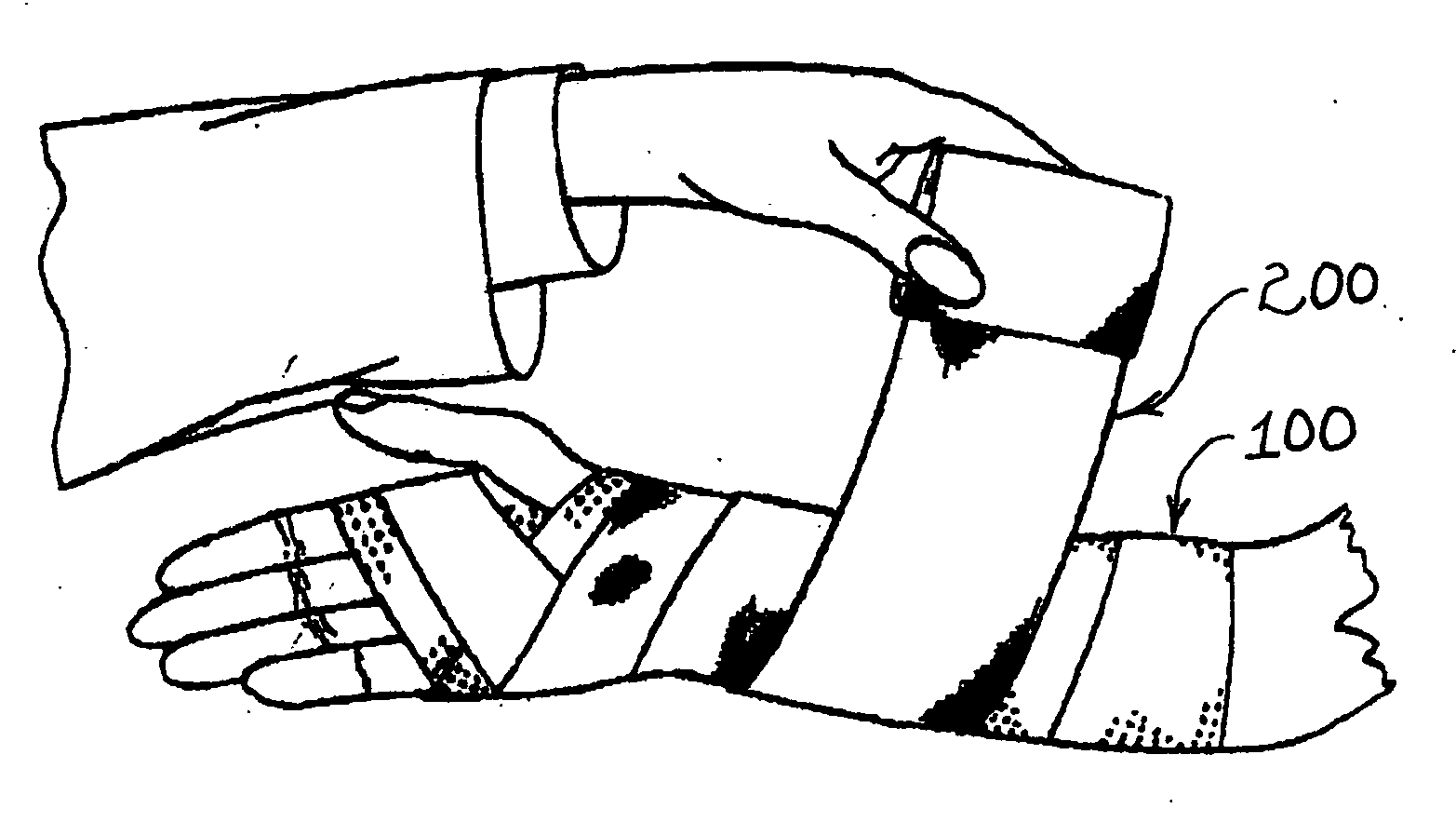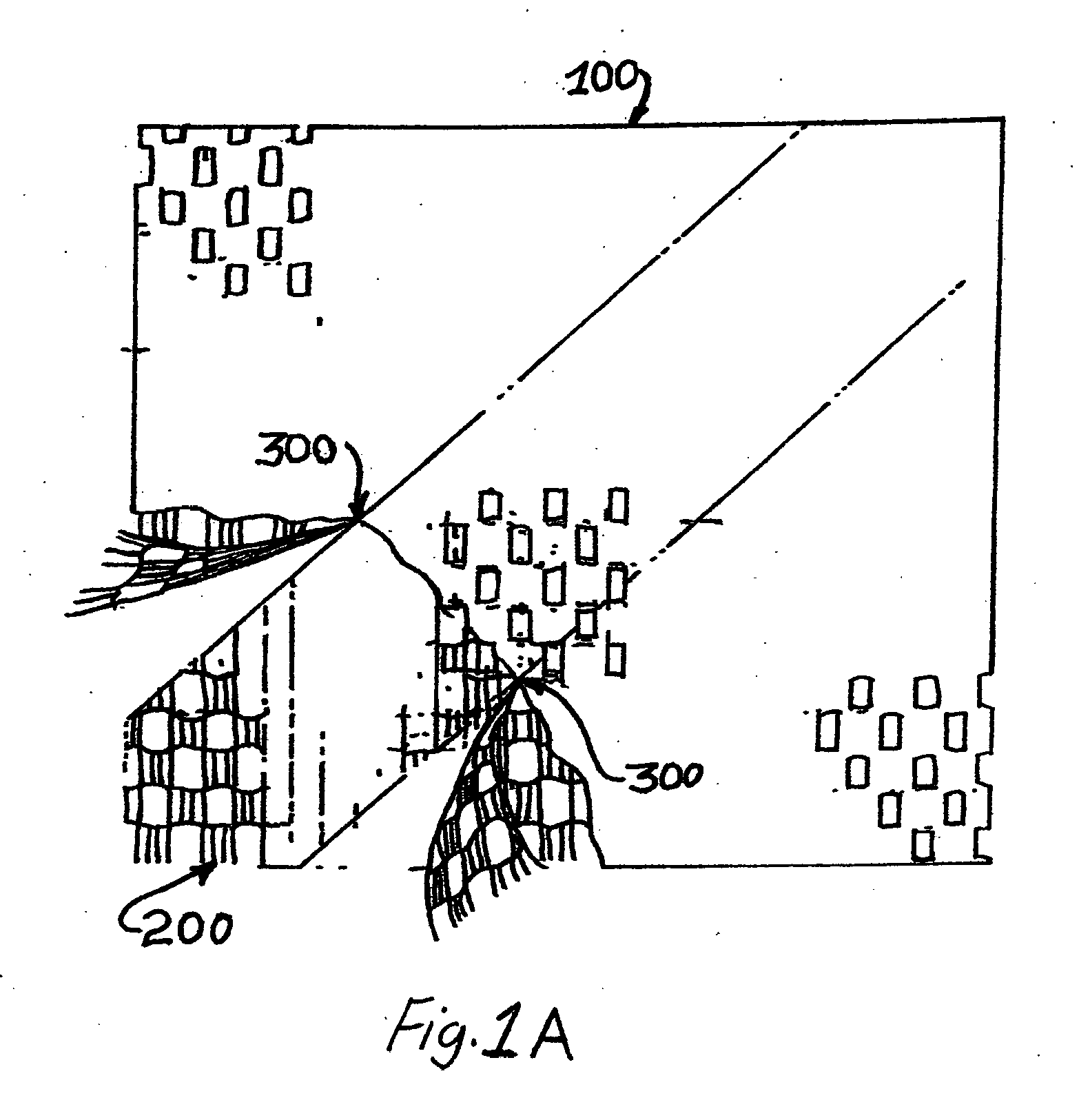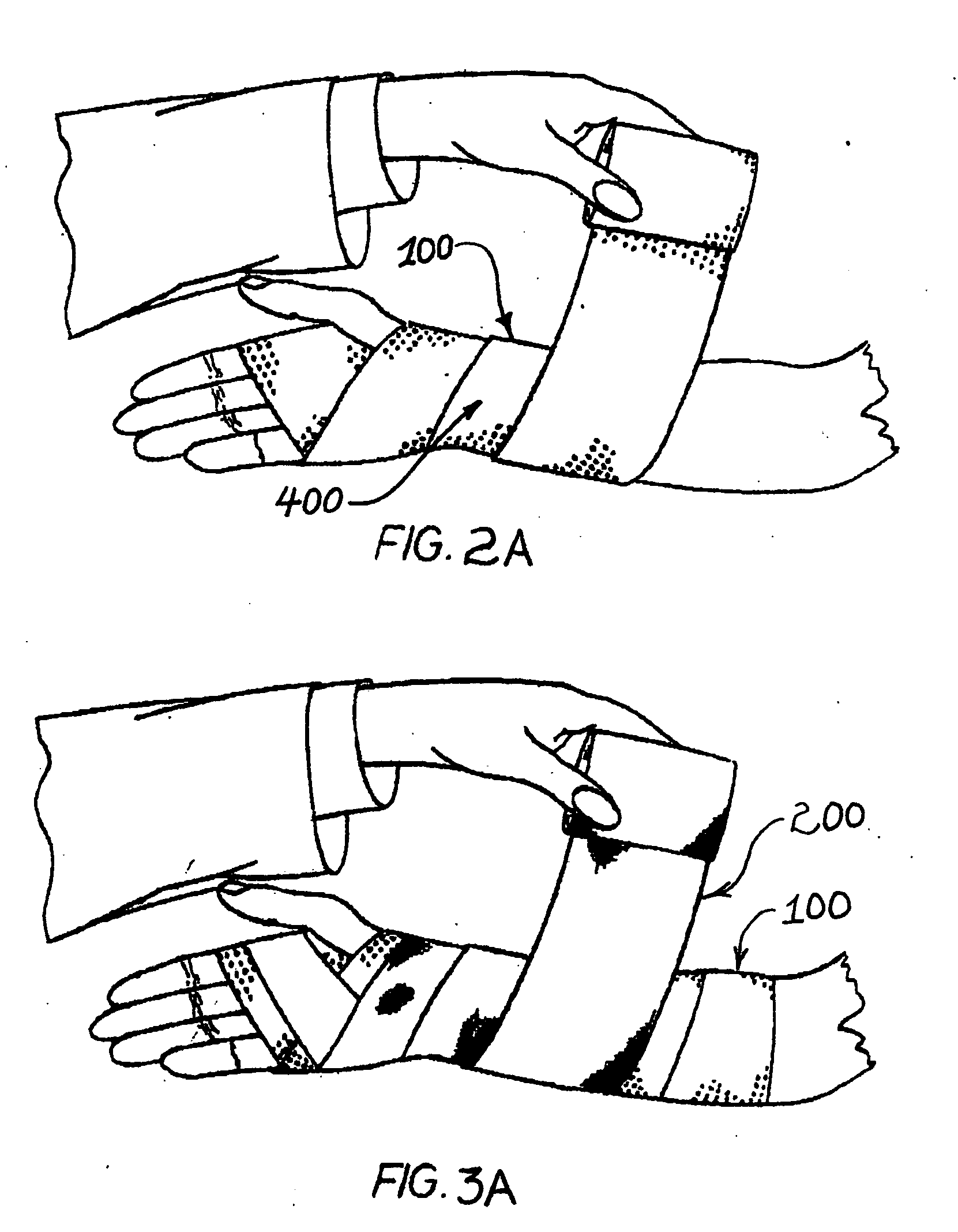Machine and process for lining and/or cushioning orthopedic casts and other orthopedic devices
a technology for orthopedic casts and linings, applied in non-surgical orthopedic devices, absorbent pads, bandages, etc., can solve the problems of unqualified success of volunteers, discomfort of wearers, interior layer that does not permit passage of liquid water, etc., to promote quick drying of dampness, improve comfort, and protect the effect of the wearer
- Summary
- Abstract
- Description
- Claims
- Application Information
AI Technical Summary
Benefits of technology
Problems solved by technology
Method used
Image
Examples
Embodiment Construction
[0046] 1. Detailed descriptions of the preferred embodiment are provided herein. It is to be understood, however, that the present invention may be embodied in various forms. Therefore, specific details disclosed herein are not to be interpreted as limiting, but rather as a basis for the claims and as a representative basis for teaching one skilled in the art to employ the present invention in virtually any appropriately detailed system, structure or manner.
[0047] 2. In the preferred embodiment, the present device uses materials comprised of hydrophobic synthetic polymers, in example, PTFE or Polyvinylchloride (PVC) in closed cell foam mode, for cushioning and / or protecting a subject from chaffing, pressure point Injury, damage or discomfort from an orthopedic or non-orthopedic protective device such as a cast, compression dressing, or brace, and to protect against a cast saw blade in the removal process.
[0048] 3. In the preferred embodiment, the hydrophobic synthetic polymers are...
PUM
| Property | Measurement | Unit |
|---|---|---|
| hydrophobic | aaaaa | aaaaa |
| adhesive | aaaaa | aaaaa |
| water vapor transmission | aaaaa | aaaaa |
Abstract
Description
Claims
Application Information
 Login to View More
Login to View More - R&D
- Intellectual Property
- Life Sciences
- Materials
- Tech Scout
- Unparalleled Data Quality
- Higher Quality Content
- 60% Fewer Hallucinations
Browse by: Latest US Patents, China's latest patents, Technical Efficacy Thesaurus, Application Domain, Technology Topic, Popular Technical Reports.
© 2025 PatSnap. All rights reserved.Legal|Privacy policy|Modern Slavery Act Transparency Statement|Sitemap|About US| Contact US: help@patsnap.com



